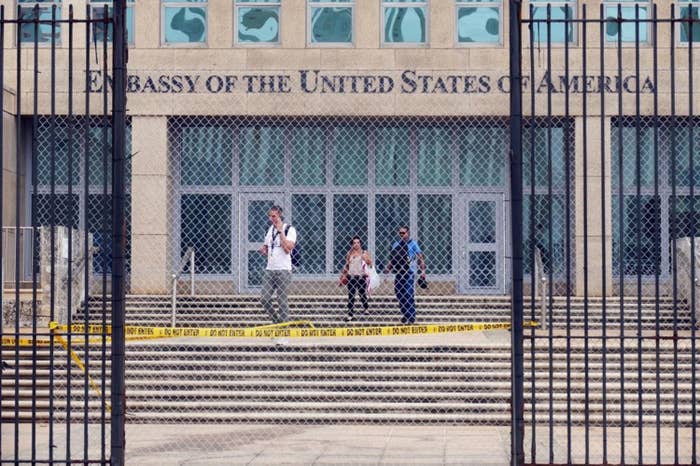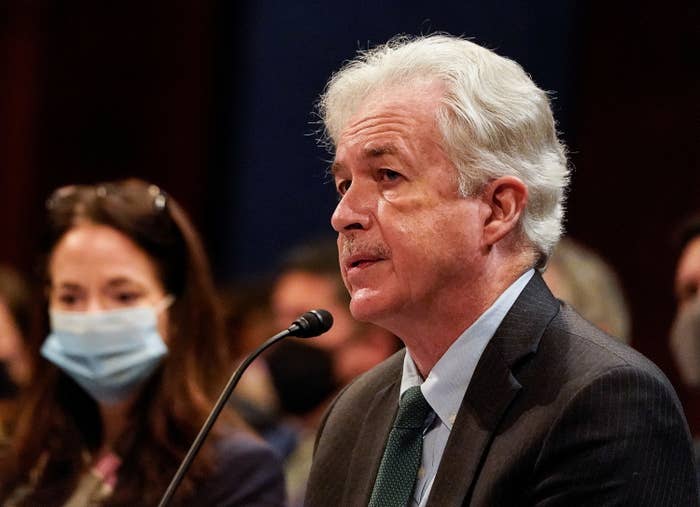
Pulsed microwaves or ultrasound beams “plausibly” might have caused so-called Havana Syndrome injuries now thought to have affected about two dozen CIA and State Department employees, according to a newly released US intelligence community expert report.
The redacted report, however, fell short of definite conclusions, suggesting that psychology may also “cause some other incidents or contribute to long-term symptoms” of the incidents.
Starting in late 2016 and into the next year, about two dozen CIA and State Department personnel in Cuba began reporting dizziness, vertigo, trouble concentrating, and related symptoms, often initiated after hearing sharp grinding noises, that came to be called “Havana Syndrome.” The symptoms spread to Canadian diplomats and then worldwide, particularly in the last year, after the US Defense Department asked its personnel to report similar cases. Some news reports late last year claimed hundreds of injuries, with some national security news reporters, citing intelligence sources, claiming that Russian spies were attacking US diplomats worldwide with clandestine pulsed microwaves.
In January, however, a US intelligence community report assembled by the CIA concluded that there was no massive worldwide campaign, and that most of the reported injuries were explainable. Only about two dozen were truly concerning and bore further investigation, perhaps being the results of attacks of some kind.
The expert panel report released Wednesday is a complement to that report, looking only at possible mechanisms for the injuries in those remaining cases. Essentially it finds that pulsed microwaves or ultrasound beams were “plausibly” causes for the injuries, meaning they were not impossible (as opposed to “likely”) explanations, and that researchers should examine them further.
"We will stay at it, with continued rigor, for however long it takes," Director of National Intelligence Avril Haines and CIA director William Burns said in a joint statement regarding the report on the “Anomalous Health Incidents,” as syndrome cases are now termed by the US government. The Biden administration had announced on Tuesday that it was appointing a central point person to create policies for addressing reports of syndrome-like injuries that are scheduled for release later this month.

The new report does rule out radiation, poison, audible and subsonic noises, and heat as possible explanations for the injuries. In reintroducing ultrasound as an explanation for Havana Syndrome, however, the expert report complicated, rather than simplified, explanations for the cases. A National Academies of Sciences report had found that pulsed microwaves, which are capable of causing faint sounds in the ear at certain settings, were the most plausible (again, rather than likely) explanation, followed by mass psychology. Experts had largely ruled out ultrasound in 2017, but the new report suggests that concealed ultrasound sources close to victims might cause injuries.
In an email, University of Illinois biomedical engineer James Lin said the ultrasound finding left him “puzzled.”
“To have any effect, the source needs to be very strong (powerful and bulky equipment) or very close to the target or subject,” said Lin, a proponent of pulsed microwaves. “Ultrasound propagates very poorly in air. It is quickly attenuated.”
UCLA neurologist Robert Baloh says the expert study not finding a smoking gun to explain the injuries, along with the recent intelligence report dismissing most cases, points to a simpler answer in mass psychology. "I believe that they are coming around to the conclusion that there was no weapon but they are bending over backward not to offend 'victims'," he said, by email.
University of Pennsylvania bioengineer Ken Foster wasn’t as skeptical.
"I had been a skeptic, but after my recent study, I am convinced that it is possible to cause a frightening but harmless experience to someone using pulsed microwaves,” he said in an email. “The challenge is to make such attacks ‘stealthy’ (not observed), but I think that is possible also. I do not know whether such weapons exist, and the government is not telling us. But if some actor wanted to frighten the entire State Department and CIA by hitting a few individuals, they succeeded admirably.”
In ruling out audible noises for playing a role in Havana Syndrome, the expert panel echoes a similar declassified State Department report first reported last year by BuzzFeed News that found recorded Havana Syndrome “attack” noises were likely from crickets and weren’t caused by microwaves. A central contradiction in reports of Havana Syndrome incidents are that the incident recordings of audible noises don’t comport with explanations like microwaves or ultrasound that don’t cause them.
The unnamed experts who authored the new report were provided more than 1,000 classified documents, including the findings of “Top Secret” programs, and met with people with injuries to reach their findings. Such classified information was not provided to a 2019 CDC panel report, also first reported last year by BuzzFeed News. Nevertheless, the new report finds “a dearth of systematic research” on microwaves hurting people, and “information gaps” regarding ultrasound injuries, despite its access.
“Today’s findings underscore the need to continue investigating the source of these symptoms, and prioritizing access to care for those suffering from these medical conditions,” Sen. Mark Warner of Virginia, chairman of the Senate intelligence committee, said in a statement.
“I’d really like to see national security reporters start asking why the intelligence agencies are releasing these Havana Syndrome reports now,” media scholar Nolan Higdon, author of The Anatomy of Fake News: A Critical News Education, told BuzzFeed News. He called the rapid switch in recent weeks of news reports going from breathlessly reporting a Russian attack campaign on hundreds of US diplomats to instead reporting a few dozen confusing injuries disappointing.
Similar to past reports, the expert panel expressed sympathy for people with injuries, calling them real and requiring treatment, assistance mandated last year by Congress in overwhelming votes. They echoed Burns, who in a recent year-end message to CIA retirees, said, “Our officers have reported very real experiences and suffered very real symptoms — and it is profoundly wrong, and profoundly harmful, to suggest otherwise.”
UPDATE
The story has been updated with comment from UCLA neurologist Robert Baloh.